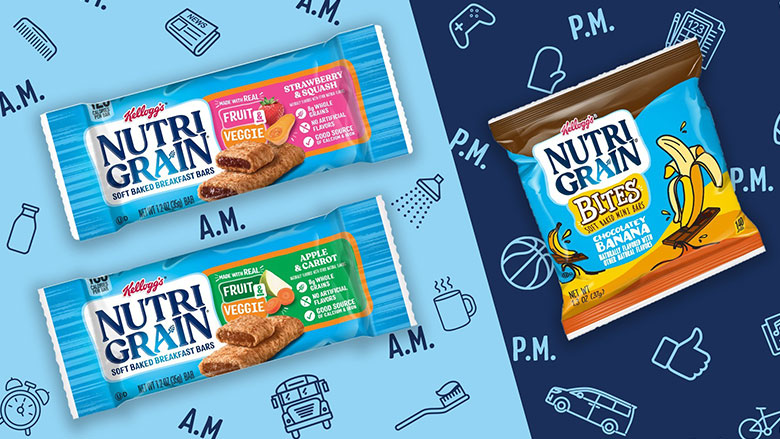1. Introduction to Muscle Building
Building muscle is not only about improving physical appearance but also enhancing overall health and functionality. Whether you’re an athlete aiming to optimize performance or someone seeking to improve strength and endurance, understanding the fundamentals of muscle building is essential. This section serves as an introductory overview, highlighting the significance of muscle building and introducing the Wellhealth How to Build Muscle Tag as a comprehensive resource.
Understanding the Importance of Building Muscle:
Muscle tissue plays a crucial role in various bodily functions beyond simply moving limbs. Strong muscles support posture, joint stability, and overall mobility, contributing to better quality of life. Additionally, increasing muscle mass can boost metabolism, aiding in weight management and promoting better insulin sensitivity, thereby reducing the risk of metabolic disorders like diabetes.
Benefits of Muscle Building:
The benefits of building muscle extend beyond physical appearance. They include:
- Enhanced strength and endurance: Strengthening muscles improves functional capacity, making daily tasks easier and reducing the risk of injury during physical activities.
- Metabolic benefits: Muscle tissue is metabolically active, meaning it burns more calories at rest compared to fat tissue. Building muscle can help increase basal metabolic rate, facilitating weight loss or maintenance.
- Bone health: Resistance training, a key component of muscle building, also stimulates bone remodeling, leading to increased bone density and reduced risk of osteoporosis.
- Improved overall health: Building muscle can positively impact cardiovascular health, blood sugar regulation, and mental well-being, contributing to a healthier lifestyle overall.
Overview of Wellhealth How to Build Muscle Tag:
The Wellhealth How to Build Muscle Tag serves as a comprehensive guide designed to assist individuals at various fitness levels in achieving their muscle-building goals. It encompasses a range of resources, including personalized workout plans, nutritional guidance, and strategies for overcoming common challenges. By providing evidence-based recommendations and practical tips, the Wellhealth Tag aims to empower individuals to optimize their muscle-building journey efficiently and effectively.
In the subsequent sections of this article, we will delve deeper into the key components of muscle building, including goal setting, nutrition, workout routines, rest and recovery, challenges and solutions, and frequently asked questions, all within the framework of the Wellhealth How to Build Muscle Tag.

2. Setting Clear Goals for Muscle Building
Setting clear and achievable goals is essential for any successful muscle-building journey. Without defined objectives, it’s challenging to stay focused, track progress, and make necessary adjustments along the way. In this section, we’ll explore the importance of setting clear goals, how to define them effectively, and why they are fundamental to the muscle-building process.
Defining Clear Muscle Building Goals:
When setting goals for muscle building, it’s essential to be specific, measurable, achievable, relevant, and time-bound (SMART). Here’s how each component contributes to effective goal setting:
Specific:
Clearly define what you want to achieve. Instead of a vague goal like “getting stronger,” specify the muscle groups you want to target, such as increasing upper body strength or developing leg muscles.
Measurable:
Establish criteria to track progress and determine when you’ve reached your goal. This could include measurements like lifting heavier weights, increasing repetitions, or reducing body fat percentage.
Achievable:
Set goals that are realistic and attainable based on your current fitness level, lifestyle, and commitment. While it’s essential to challenge yourself, setting overly ambitious goals can lead to frustration and burnout.
Relevant:
Ensure your goals align with your overall objectives and priorities. Consider how building muscle fits into your broader fitness goals, health aspirations, and lifestyle preferences.
Time-Bound:
Set deadlines or target dates to create a sense of urgency and accountability. Having a timeline helps you stay motivated and focused on making consistent progress.
Importance of Setting Objectives:
Clear goals provide direction and purpose, guiding your actions and decisions throughout the muscle-building process. Here are some reasons why setting objectives is crucial:
Motivation:
Having specific goals gives you something to strive for, keeping you motivated during workouts and making it easier to push through challenges.
Focus:
Clear objectives help you prioritize your efforts, focusing on activities and strategies that align with your desired outcomes.
Progress Tracking:
With well-defined goals, you can track your progress objectively, celebrating achievements and identifying areas for improvement.
Accountability:
Setting goals creates a sense of accountability, both to yourself and potentially to others, such as a trainer or workout partner. This accountability encourages consistency and discipline in your training regimen.
Adaptation:
Goals provide a framework for evaluating your progress and making necessary adjustments to your training, nutrition, and lifestyle habits. If you’re not seeing the desired results, you can modify your approach while staying aligned with your ultimate objectives.
In the next section, we’ll delve into practical strategies for setting SMART muscle-building goals and how to integrate them effectively into your workout routine using the Wellhealth How to Build Muscle Tag.

3. Nutrition for Muscle Development
Nutrition is a cornerstone of muscle development, playing a pivotal role in fueling workouts, supporting muscle repair, and promoting overall growth and recovery. In this section, we’ll explore the importance of nutrition in muscle building, delve into key macronutrients and micronutrients, and discuss strategies for optimizing your dietary intake to support your muscle-building goals.
Role of Nutrition in Muscle Building:
Proper nutrition provides the foundation for muscle growth and development. When you engage in resistance training and other forms of exercise, your muscles undergo stress and damage, prompting the body to repair and rebuild muscle tissue stronger than before. Adequate nutrition ensures that your body has the necessary building blocks to support this process effectively.
Key Macronutrients for Muscle Growth:
Proteins:
Protein is essential for muscle repair and growth, as it provides the amino acids necessary for synthesizing new muscle tissue. Aim to consume high-quality protein sources such as lean meats, poultry, fish, eggs, dairy products, legumes, and plant-based protein sources like tofu and tempeh.
Carbohydrates:
Carbohydrates serve as the body’s primary source of energy, fueling intense workouts and replenishing glycogen stores after exercise. Opt for complex carbohydrates such as whole grains, fruits, vegetables, and legumes, which provide sustained energy and essential nutrients.
Healthy Fats:
While often overlooked, healthy fats play a crucial role in hormone production, including testosterone, which is essential for muscle growth. Incorporate sources of unsaturated fats like avocados, nuts, seeds, olive oil, and fatty fish into your diet to support overall health and optimize muscle-building potential.
Micronutrients for Muscle Health:
In addition to macronutrients, micronutrients such as vitamins and minerals are vital for muscle health and function. Some key micronutrients involved in muscle metabolism include:
Vitamin D:
Helps regulate calcium absorption and supports muscle strength and function.
Calcium:
Essential for muscle contraction and bone health.
Magnesium:
Plays a role in muscle relaxation and energy metabolism.
Iron:
Necessary for oxygen transport and energy production during exercise.
Zinc:
Supports protein synthesis and immune function.
Hydration:
Proper hydration is also essential for muscle function and recovery. Dehydration can impair performance and hinder muscle repair and growth. Aim to drink an adequate amount of water throughout the day, especially before, during, and after workouts, to maintain optimal hydration levels.
Nutrition Strategies for Muscle Building:
To optimize your nutrition for muscle building, consider the following strategies:
Eat Sufficient Protein:
Consume a balanced diet rich in high-quality protein sources to support muscle repair and growth.
Timing of Meals:
Distribute your protein intake evenly throughout the day and include a source of protein in each meal and snack to maximize muscle protein synthesis.
Carbohydrate Timing:
Prioritize carbohydrates around workouts to fuel exercise performance and replenish glycogen stores.
Balanced Diet:
Aim for a balanced diet that includes a variety of nutrient-dense foods to meet your overall nutritional needs and support optimal health and performance.
By paying attention to your nutrition and fueling your body with the right nutrients, you can maximize your muscle-building potential and achieve your fitness goals more effectively. In the next section, we’ll explore how to integrate these nutritional principles into your muscle-building journey using the Wellhealth How to Build Muscle Tag.

4. Effective Workout Routines
Building muscle requires more than just lifting weights; it involves implementing effective workout routines that target specific muscle groups, stimulate growth, and promote strength gains. In this section, we’ll explore the components of a well-rounded workout routine, including resistance training, cardiovascular exercise, warm-ups, and flexibility work, all designed to maximize muscle-building potential.
Importance of Resistance Training:
Resistance training, also known as strength or weight training, is the cornerstone of any muscle-building program. It involves using external resistance, such as dumbbells, barbells, resistance bands, or bodyweight, to challenge your muscles and stimulate growth. Here’s why resistance training is crucial for building muscle:
Muscle Hypertrophy:
Resistance training induces muscle hypertrophy, the process of increasing muscle size through repeated bouts of tension and stress.
Strength Gains:
By progressively overloading your muscles with heavier weights or increased resistance, you can build strength and improve muscle function.
Metabolic Benefits:
Resistance training boosts metabolism, leading to increased calorie expenditure both during and after workouts, which can support fat loss and muscle definition.
Bone Health:
Weight-bearing exercises like resistance training promote bone density and reduce the risk of osteoporosis and bone fractures.
Cardiovascular Exercise:
While resistance training is essential for building muscle, incorporating cardiovascular exercise into your routine offers numerous benefits, including:
Improved Heart Health:
Cardiovascular exercise strengthens the heart muscle, improves circulation, and lowers blood pressure, reducing the risk of heart disease and stroke.
Fat Loss:
Cardiovascular exercise, particularly high-intensity interval training (HIIT), can enhance fat loss while preserving lean muscle mass, leading to a more defined physique.
Endurance and Stamina:
Regular cardio workouts improve endurance and stamina, allowing you to perform better during resistance training sessions and other physical activities.
Recovery:
Light aerobic exercise can aid in recovery by promoting blood flow to muscles, reducing soreness, and facilitating the removal of metabolic waste products.
Warm-ups and Mobility Work:
Prior to engaging in resistance training or intense exercise, it’s essential to warm up properly to prepare your muscles, joints, and cardiovascular system for the workout ahead. A dynamic warm-up routine may include:
Cardiovascular Activation:
5-10 minutes of light aerobic exercise such as jogging, cycling, or jumping jacks to increase heart rate and blood flow.
Dynamic Stretching:
Dynamic stretching exercises that move muscles and joints through a full range of motion, such as leg swings, arm circles, and torso twists, to improve flexibility and mobility.
Activation Exercises:
Activation exercises that target specific muscle groups to enhance neuromuscular activation and stability, such as glute bridges, band walks, and scapular retractions.
Cool-down and Flexibility Work:
After completing your workout, take time to cool down and perform static stretching exercises to help relax muscles, improve flexibility, and prevent stiffness and soreness. Focus on stretching all major muscle groups, holding each stretch for 15-30 seconds without bouncing, and breathing deeply to facilitate relaxation.
By incorporating these components into your workout routine and following a well-designed program tailored to your goals and fitness level, you can maximize muscle growth, strength gains, and overall fitness. In the next section, we’ll explore how to design an effective training program using the principles of the Wellhealth How to Build Muscle Tag.

5. Rest, Recovery, and Muscle Growth
Rest and recovery are integral components of any successful muscle-building program. While intense workouts stimulate muscle growth, it’s during periods of rest that muscles repair and grow stronger. In this section, we’ll delve into the importance of rest and recovery for muscle growth, strategies for optimizing recovery, and how to incorporate rest days into your training schedule effectively.
Prioritizing Rest and Recovery:
Muscle Repair and Growth:
During resistance training, microscopic tears occur in muscle fibers, triggering the body’s repair process. Rest and recovery allow for the rebuilding of muscle tissue, resulting in increased muscle size and strength.
Prevention of Overtraining:
Overtraining occurs when the body is subjected to excessive stress without adequate recovery time, leading to diminished performance, fatigue, and increased risk of injury. Proper rest and recovery mitigate the risk of overtraining, allowing for sustained progress and performance improvements.
Hormonal Balance:
Adequate rest supports hormonal balance, including the release of growth hormone and testosterone, which are essential for muscle growth and repair. Insufficient sleep and rest can disrupt hormone production, hindering muscle-building efforts.
Strategies for Optimizing Recovery:
Quality Sleep:
Aim for 7-9 hours of quality sleep each night to facilitate muscle repair, hormone production, and overall recovery. Prioritize sleep hygiene practices such as maintaining a consistent sleep schedule, creating a relaxing bedtime routine, and optimizing sleep environment for optimal rest.
Nutrition:
Proper nutrition plays a crucial role in recovery, providing the nutrients necessary for muscle repair and replenishing energy stores. Consume a balanced diet rich in protein, carbohydrates, and healthy fats, and consider post-workout nutrition strategies such as consuming a protein-rich meal or shake within the post-exercise window.
Active Recovery:
Incorporate active recovery activities such as light cardio, yoga, or mobility exercises on rest days to promote blood flow, reduce muscle soreness, and enhance recovery without overstressing the body.
Hydration:
Stay hydrated throughout the day by drinking an adequate amount of water, especially before, during, and after workouts. Proper hydration supports nutrient transport, muscle function, and overall recovery.
Stress Management:
Chronic stress can impair recovery and hinder muscle growth by elevating cortisol levels, a stress hormone that can promote muscle breakdown. Incorporate stress management techniques such as mindfulness, meditation, deep breathing exercises, or hobbies to reduce stress and promote relaxation.
Incorporating Rest Days:
Rest days are essential for allowing the body to recover fully from intense workouts and prevent overtraining. While the frequency of rest days may vary depending on individual factors such as training intensity, volume, and recovery capacity, aim to incorporate at least one to two rest days per week into your training schedule.
On rest days, prioritize activities that promote relaxation and recovery, such as gentle stretching, foam rolling, or leisurely walks. Listen to your body’s cues and adjust your training schedule as needed to ensure adequate rest and recovery between workouts.
By prioritizing rest and recovery as integral components of your muscle-building program, you can optimize muscle growth, performance, and overall well-being. In the next section, we’ll explore how to implement these principles into your training regimen using the Wellhealth How to Build Muscle Tag.

6. Challenges and Solutions in Muscle Building
While building muscle can be a rewarding journey, it’s not without its challenges. From hitting plateaus to dealing with injuries, various obstacles can arise along the way. In this section, we’ll identify common challenges faced during muscle building and provide practical solutions to overcome them, ensuring continued progress and success.
1. Plateaus and How to Break Them:
Challenge:
Plateaus occur when progress stalls despite consistent effort, often due to the body adapting to the current training stimulus.
Solution:
To break through plateaus, consider implementing strategies such as:
- Increasing training intensity or volume
- Varying exercise selection and rep ranges
- Incorporating advanced training techniques like drop sets, supersets, or rest-pause sets
- Ensuring proper nutrition and recovery to support continued progress
2. Injury Prevention:
Challenge:
Injuries can sideline progress and derail muscle-building efforts, often resulting from overuse, poor form, or inadequate warm-up.
Solution:
Prioritize injury prevention by:
- Practicing proper exercise technique and form
- Gradually progressing intensity and volume to avoid overtraining
- Incorporating dynamic warm-ups and mobility exercises before workouts
- Listening to your body and addressing any signs of discomfort or pain promptly
- Consulting a healthcare professional or physical therapist if experiencing persistent pain or injury
3. Time Management:
Challenge:
Balancing the demands of work, family, and other commitments with consistent training can be challenging.
Solution:
Improve time management by:
- Scheduling workouts into your calendar as non-negotiable appointments
- Prioritizing efficient, compound exercises that target multiple muscle groups simultaneously
- Embracing shorter, high-intensity workouts when time is limited
- Identifying pockets of time throughout the day for quick, mini-workouts or activity breaks
- Incorporating lifestyle changes to optimize productivity and minimize time-wasting activities
4. Overtraining:
Challenge:
Overtraining occurs when the body is subjected to excessive stress without adequate rest and recovery, leading to fatigue, decreased performance, and increased risk of injury.
Solution:
Prevent overtraining by:
- Listening to your body and recognizing signs of fatigue or burnout
- Implementing structured rest days into your training schedule
- Varying training intensity and volume to avoid chronic overloading
- Prioritizing quality sleep, nutrition, and stress management to support recovery
- Consulting with a fitness professional or coach to develop a well-rounded training program tailored to your individual needs and goals
5. Genetics:
Challenge:
Genetic factors such as muscle fiber composition, metabolism, and body type can influence muscle-building potential and response to training.
Solution:
While genetics play a role, focus on factors within your control, such as:
- Consistency and dedication to training and nutrition
- Optimizing recovery and lifestyle habits to maximize progress
- Setting realistic goals based on individual capabilities and adjusting expectations accordingly
- Celebrating progress and achievements, regardless of genetic predispositions
By recognizing and addressing these common challenges proactively, you can navigate the ups and downs of the muscle-building journey with confidence and resilience. Stay committed to your goals, stay adaptable in your approach, and remember that overcoming obstacles is an integral part of the growth process. In the next section, we’ll explore how to access additional support and guidance through the Wellhealth How to Build Muscle Tag.

7. Frequently Asked Questions (FAQs) About Muscle Building
In this section, we’ll address some common questions and concerns that individuals often have about muscle building. Whether you’re new to fitness or looking to refine your approach, these answers can provide valuable insights and guidance to support your muscle-building journey.
1. How long does it take to build muscle?
Building muscle is a gradual process that varies depending on factors such as genetics, training intensity, nutrition, and consistency. While some individuals may notice visible progress within a few weeks, significant muscle gains typically occur over several months to years of dedicated effort.
2. Can I build muscle without lifting weights?
While resistance training with weights is one of the most effective ways to stimulate muscle growth, it’s possible to build muscle using bodyweight exercises, resistance bands, or other forms of resistance training. The key is to challenge your muscles with progressively overloaded resistance, regardless of the equipment used.
3. How often should I train each muscle group?
The frequency of training each muscle group depends on factors such as training experience, recovery capacity, and workout intensity. As a general guideline, most individuals benefit from training each major muscle group 2-3 times per week with sufficient rest between sessions to allow for recovery and growth.
4. Do I need to follow a specific diet to build muscle?
While there’s no one-size-fits-all diet for muscle building, it’s essential to consume adequate calories and macronutrients (protein, carbohydrates, and fats) to support muscle growth and recovery. Focus on eating nutrient-dense foods, prioritize protein intake, and tailor your diet to meet your individual energy needs and goals.
5. Can I build muscle while losing fat?
Yes, it’s possible to simultaneously build muscle and lose fat, although it may be more challenging than focusing on one goal at a time. To achieve this, aim for a moderate calorie deficit, prioritize protein intake, and incorporate both resistance training and cardiovascular exercise into your routine to promote fat loss while preserving lean muscle mass.
6. How can I prevent muscle soreness after workouts?
While some degree of muscle soreness (known as delayed onset muscle soreness or DOMS) is normal, there are strategies to minimize its severity and duration. These include:
- Gradually increasing exercise intensity and volume over time
- Incorporating dynamic warm-ups and cooldowns
- Staying hydrated and well-nourished
- Practicing foam rolling, stretching, or light aerobic exercise on rest days to promote blood flow and recovery
7. Is it necessary to take supplements for muscle building?
While supplements can complement a well-rounded diet and training program, they’re not essential for muscle building. Focus on meeting your nutritional needs through whole foods first, and consider supplements such as protein powder, creatine, or branched-chain amino acids if needed to fill gaps in your diet or support specific goals.
8. How do I know if I’m making progress with my muscle-building efforts?
Tracking progress is essential for assessing the effectiveness of your training and nutrition plan. Monitor key metrics such as strength gains, muscle measurements, body weight, body composition changes, and performance improvements in the gym. Additionally, pay attention to how you feel physically and mentally, as improved energy levels, mood, and confidence can indicate progress beyond the numbers.
By addressing these frequently asked questions, you can gain a better understanding of the muscle-building process and make informed decisions to optimize your training, nutrition, and overall approach to fitness. If you have additional questions or concerns, consider consulting with a fitness professional or registered dietitian for personalized guidance and support.

8. Additional Support and Resources: Wellhealth Community
As you continue your muscle-building journey, it’s essential to seek additional support and resources to enhance your progress and stay motivated. The Wellhealth community provides a valuable network of like-minded individuals, expert guidance, and comprehensive resources to support your fitness goals.
1. Access to Expert Guidance:
Joining the Wellhealth community grants you access to expert guidance from certified fitness professionals, nutritionists, and health coaches who can provide personalized advice, answer questions, and offer support tailored to your individual needs and goals. Whether you’re seeking workout tips, nutrition advice, or motivation, our experts are here to help you every step of the way.
2. Interactive Workshops and Events:
Participate in interactive workshops, webinars, and live events hosted by Wellhealth experts to deepen your knowledge, learn new skills, and connect with other members of the community. From virtual workout sessions to nutrition seminars, these events offer valuable insights and opportunities to engage with fellow fitness enthusiasts.
3. Supportive Community Forums:
Engage with a supportive community of fellow muscle-building enthusiasts through Wellhealth’s online forums and discussion groups. Share your progress, ask questions, and exchange tips and advice with like-minded individuals who share your passion for fitness and wellness. The community forums provide a platform for encouragement, accountability, and camaraderie as you pursue your fitness goals.
4. Exclusive Content and Resources:
Gain access to exclusive content, resources, and tools designed to support your muscle-building journey. From workout plans and meal guides to inspirational success stories and motivational content, Wellhealth offers a wealth of resources to help you stay informed, inspired, and empowered on your path to success.
5. Accountability and Motivation:
Stay accountable and motivated with the support of the Wellhealth community. Connect with workout buddies, accountability partners, and mentors who can help keep you on track, celebrate your successes, and provide encouragement during challenging times. The power of community support can make all the difference in staying committed to your goals and achieving long-term success.
6. Ongoing Education and Growth:
Continuously expand your knowledge and skills with ongoing education and learning opportunities provided by Wellhealth. Stay updated on the latest fitness trends, scientific research, and best practices in muscle building through curated content, articles, podcasts, and educational resources available exclusively to community members.
7. Personalized Support:
Receive personalized support and guidance from the Wellhealth team to address your unique needs, preferences, and goals. Whether you’re overcoming obstacles, adjusting your training program, or seeking advice on nutrition and supplementation, our team is dedicated to helping you achieve optimal results and unlock your full potential.
In summary, the Wellhealth community offers a supportive, informative, and empowering environment to enhance your muscle-building journey. Join us today to connect with fellow fitness enthusiasts, access expert guidance, and unlock a wealth of resources to support your goals. Together, we’ll inspire each other, overcome challenges, and celebrate successes as we strive for greater health, strength, and vitality.

9. In conclusion
Embarking on a journey to build muscle is not merely a physical endeavor but a holistic pursuit of health, strength, and personal growth. By integrating the principles outlined in this guide and tapping into the resources offered by the Wellhealth community, you have the tools and support needed to embark on a transformative journey toward achieving your fitness goals. Remember, progress may be gradual, and obstacles may arise along the way, but with dedication, consistency, and the support of a thriving community, you are capable of unlocking your full potential and sculpting the strong, resilient physique you desire. Embrace the challenges, celebrate the victories, and continue striving for progress, knowing that each step forward brings you closer to realizing your vision of optimal health and vitality. Your muscle-building journey awaits—let’s embark on it together, with Wellhealth as your trusted companion and guide.


